Key takeaways:
- Literary collaborations allow exploration of new perspectives, enhancing creativity and narrative depth.
- Effective communication and alignment of creative visions are crucial to overcoming challenges in collaborative projects.
- Embracing vulnerability and flexibility can lead to unexpected breakthroughs and richer narratives in collaborations.
- Regular check-ins and recognizing each other’s strengths foster a productive and cohesive creative environment.
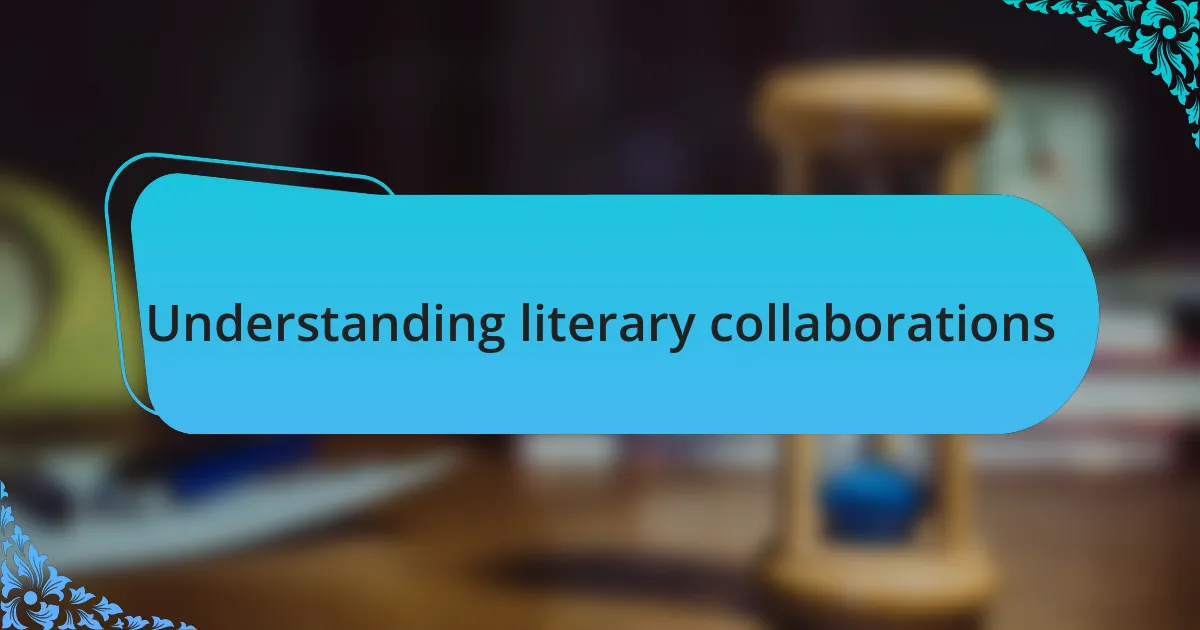
Understanding literary collaborations
Literary collaborations can often feel like a dance between two creative minds, each bringing their unique rhythm to the project. I remember my first collaboration; the excitement of brainstorming alongside another writer was infectious. It made me wonder—how often do we let others influence our creative process?
What strikes me most about these partnerships is the chance to explore perspectives that aren’t our own. In one collaboration, I found myself diving deep into themes and styles that I had never considered before. It was eye-opening! Isn’t it fascinating how a shared project can push us to expand our literary boundaries?
However, literary collaborations can also reveal challenges, like miscommunication or differing visions. I once partnered with a friend over a story idea, and we quickly discovered our approaches differed significantly. This taught me the importance of setting clear intentions from the start. Have you ever faced creative differences in your writing? It can be tough, but the resolution often leads to richer narratives.

Importance of literary festivals
Literary festivals serve as vibrant hubs for creativity and inspiration, uniting diverse voices under one roof. I remember attending my first festival and feeling an electric buzz in the air as authors shared their passions and their stories. It struck me then—how essential these gatherings are for fostering community and igniting new ideas among writers and readers alike.
These events are crucial not just for networking but also for exposure to varied literary forms. At one festival, I participated in a panel discussion on experimental poetry, and the insights I gained reshaped my understanding of conventional storytelling. Have you ever thought about how a single conversation can open new doors in your writing journey?
Moreover, literary festivals create a space for dialogue on important social and cultural issues. During a workshop, an author discussed the impact of marginalized voices in literature, which resonated deeply with me. It made me reflect: how often do we engage with perspectives that challenge our own? This kind of exchange is vital for personal growth and for shaping a more inclusive literary landscape.

Types of literary collaborations
Literary collaborations come in various forms, each offering unique benefits and challenges. One intriguing type is co-authoring works, where two or more writers combine their creative energies. I recall working on a short story with a fellow writer; it was fascinating to see how our distinct voices intertwined to create something entirely new. Have you ever tried co-authoring with someone? The exchange of ideas can lead to unexpected shifts in narrative direction that enrich the final product.
Another compelling form is anthologies, where multiple authors contribute individual pieces under a unified theme. I once contributed to an anthology focused on urban life, and it was eye-opening to see how different perspectives emerged from a shared topic. What surprised me the most was the way each writer tackled the theme in their unique style, creating a tapestry of voices that resonated with our collective experiences. Isn’t it amazing how individual voices can harmonize into a single narrative?
Then there’s the collaboration between writers and artists, merging literature with visual storytelling. I remember collaborating with an illustrator on a children’s book project, where we brainstormed ideas and integrated images with the narrative. This experience opened my eyes to the power of visuals in storytelling—how they can enhance the emotional weight of the prose. How do you think visuals change the way we perceive a written story? It’s a question that lingers with me, reflecting on how collaborations can expand the creative horizon.
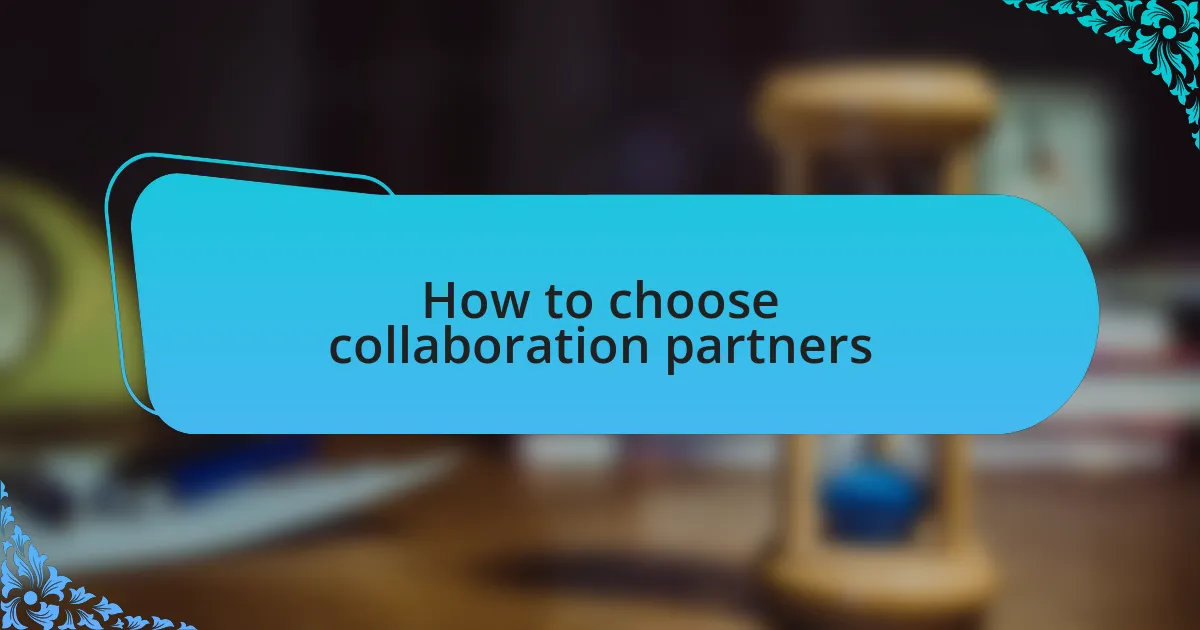
How to choose collaboration partners
When choosing collaboration partners, it’s essential to consider whether your creative visions align. I once partnered with a poet whose work I admired, but our styles didn’t mesh well in the end. It was a valuable lesson; I learned that compatibility in artistic voice can significantly influence the collaboration’s success. Have you thought about how our differing approaches can either elevate or hinder our projects?
Additionally, assessing the strengths and weaknesses of potential partners is crucial. In one project, I teamed up with a writer known for their technical prowess, which balanced my more emotive style. This combination allowed us to create a more layered piece that appealed to a broader audience. It makes me wonder: how can our unique strengths complement each other in ways we might not initially expect?
Lastly, it’s wise to communicate openly about expectations and goals. I recall a collaboration that initially felt promising but quickly unraveled due to misaligned priorities. We had different visions that were not discussed early on, resulting in frustration on both sides. How can we ensure that open dialogue about our aspirations leads to fulfilling partnerships? It’s a conversation I now prioritize before embarking on any collaboration journey.
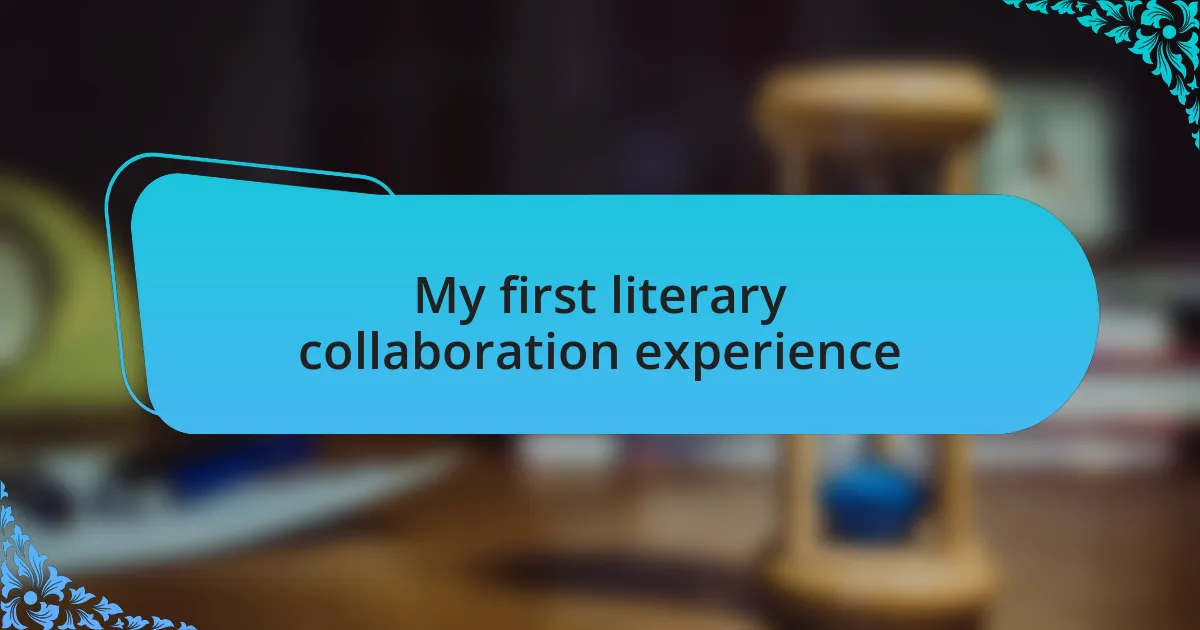
My first literary collaboration experience
I remember my first literary collaboration vividly. It was with a fellow writer I had met at a local workshop, and we were both excited about merging our ideas for a short story. As we dove into brainstorming sessions, the thrill of bouncing ideas off each other was palpable, yet I quickly realized how challenging it was to maintain our unique voices while finding common ground. Have you ever felt the excitement of collaboration, only to wonder if your creative identities would survive it?
As we drafted our piece, we occasionally clashed over tone and pacing. It became a heartfelt struggle for me because I wanted to preserve my narrative style without imposing my vision on my partner. I learned that compromise is essential, but it shouldn’t come at the cost of losing your artistic integrity. Looking back, how do you navigate that tightrope between collaboration and personal expression?
Despite the hurdles, I found the experience exhilarating and full of growth. The final product, though not perfect, was imbued with both of our spirits, and I felt a deep sense of accomplishment. Each time readers responded positively, it reinforced my belief that collaboration, while challenging, can lead to rewarding outcomes. Have you had moments where you learned to celebrate those imperfections together?
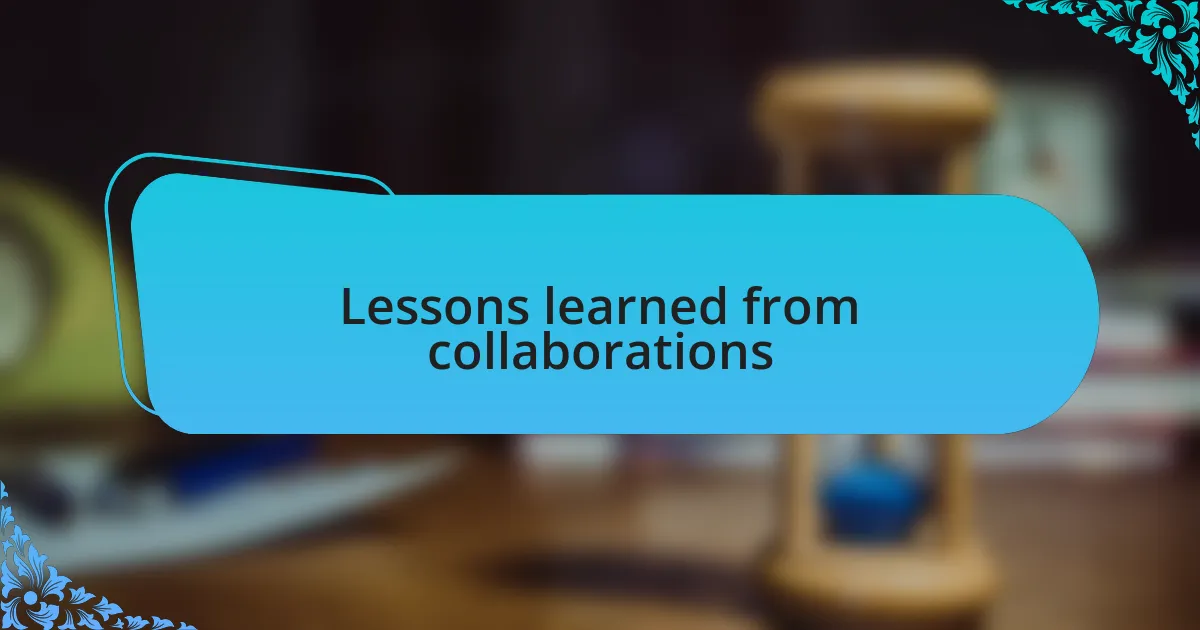
Lessons learned from collaborations
In my collaborations, I’ve often found that communication is the key to success. One time, while working on an anthology, I discovered the importance of setting clear expectations from the start. This prevented misunderstandings that could have derailed our creative flow. Have you ever faced frustration because of a lack of clarity in your projects?
Another vital lesson was the power of flexibility. In one project, a fellow author proposed a radical shift in our plot direction midway through. At first, I resisted out of fear of losing our original vision, but embracing this new idea led us to a breakthrough that enhanced the narrative. Have you ever hesitated before taking a creative leap, only to find that it brought about unexpected brilliance?
Lastly, I’ve learned to embrace vulnerability. In one collaboration, sharing my insecurities about my writing felt daunting. However, the moment I opened up, it not only strengthened my bond with my partner but also deepened our narrative. Can you recall moments in your own creative journey where vulnerability led to powerful connections?
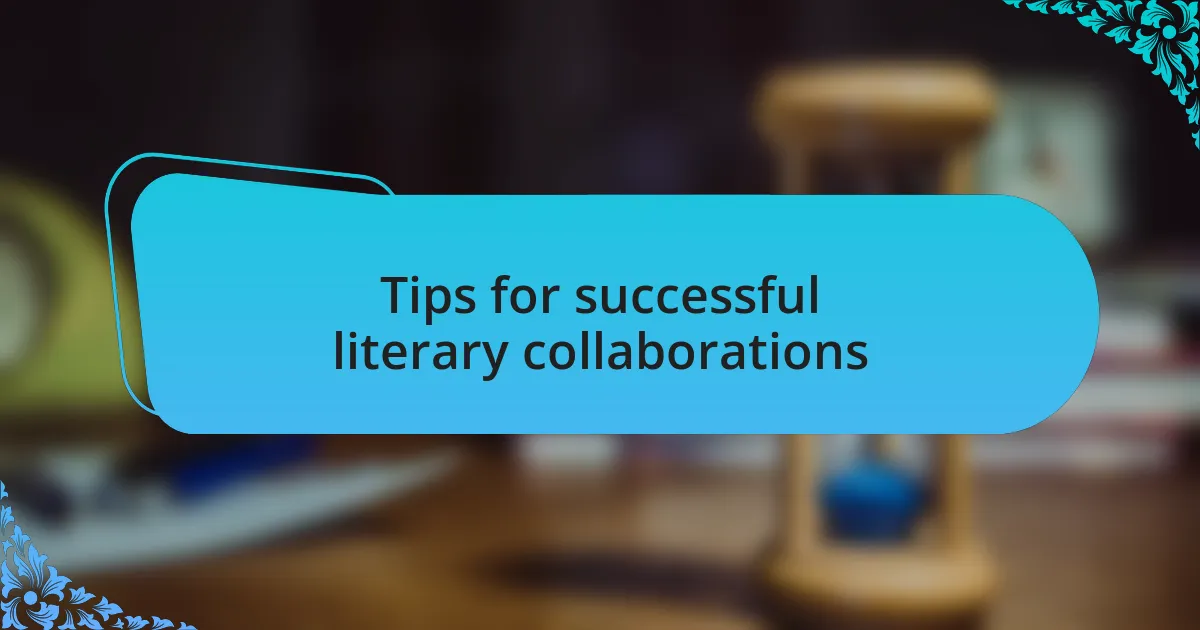
Tips for successful literary collaborations
One of the most effective strategies I’ve discovered in literary collaborations is establishing a shared vision. Early on, I worked with a poet to create a collection that blended our distinct styles. We spent hours discussing our themes and influences, which resulted in a cohesive work that genuinely reflected both our voices. Have you ever thought about how important it is for artists to find common ground to enhance creative synergy?
Another aspect that has proven invaluable is the importance of recognizing each collaborator’s strengths. In one instance, I partnered with a visual artist whose use of color breathed life into our narrative. By acknowledging her talent and placing trust in her artistic decisions, I found the written word and visual art intertwined beautifully. How often do we overlook the unique gifts our collaborators bring to the table?
Lastly, setting aside time for regular check-ins can make a world of difference. During a recent project, we scheduled brief catch-ups every other week. This habit not only kept our creative energy flowing but also gave us the chance to address any concerns before they ballooned into bigger issues. Have you ever noticed how a simple conversation can align your efforts and reignite your passion for the project?